In this era where electronic products are omnipotent, there are not many models that can be hailed as nearly perfect. The development of a model without an engine poses a significant challenge. However, Porsche has delivered a serious work of art with the Taycan, paying homage to the times.
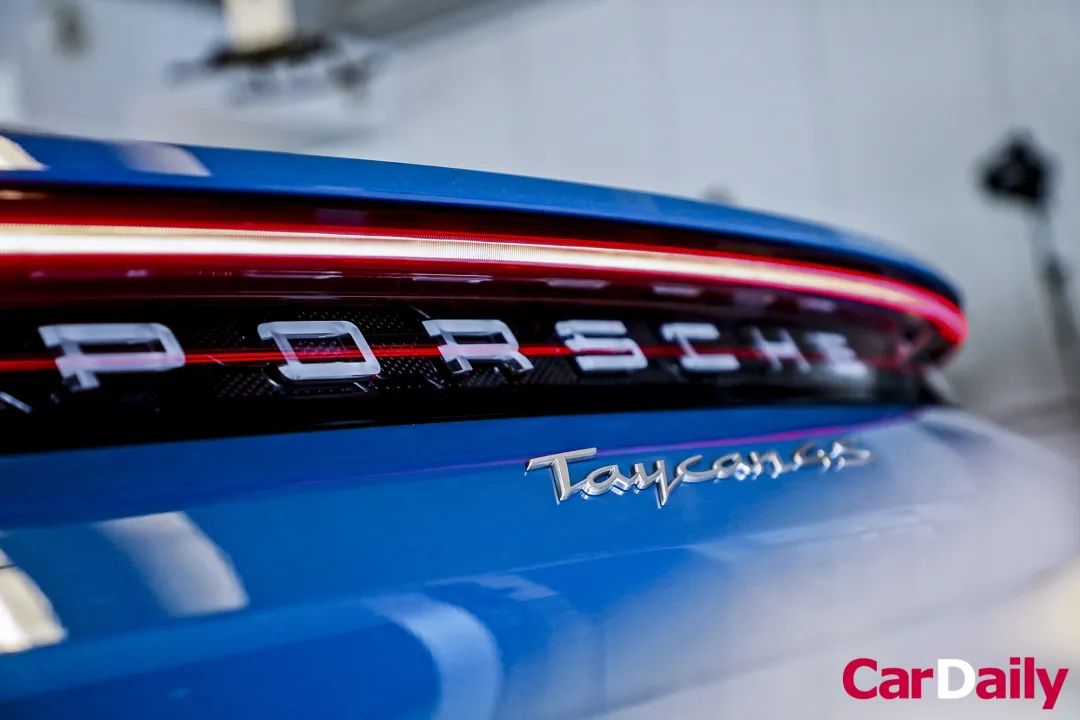
Therefore, before the all-new Taycan officially arrives, we had an in-depth conversation with its creators to demonstrate that when it comes to technology, Porsche is serious. After all, the technical discussions we previously had were mostly about presenting data and stacking configurations, but at the intersection of new energy and traditional fuel, the same topics also require new evolution.
01
The battery is part of the vehicle body.
As a pure electric vehicle, the importance of the battery is self-evident. The all-new Taycan does not exclude it from the vehicle body; instead, it integrates the battery pack with the body structure from the design stage. The battery is installed in the center of the vehicle’s floor, lowering the center of gravity. The battery is equipped with an aluminum shell designed as a load-bearing component, secured to the body with 28 bolts. Thus, the overall weight distribution of the vehicle is more reasonable, and the integrity and stability of the body are well balanced.
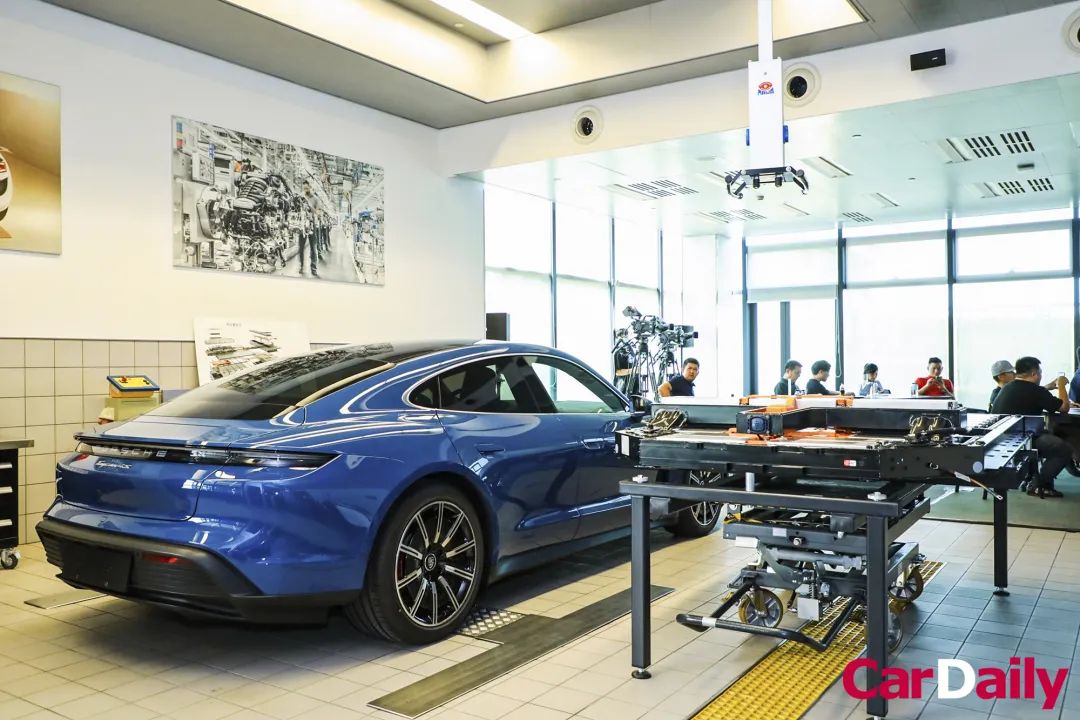
Meanwhile, the materials used in the all-new Taycan’s body are also noteworthy. Various materials are mixed based on the characteristics of different vehicle parts. The all-aluminum body is primarily made of a combination of aluminum and steel. The suspension supports, axle supports, and rear side beams are all made of die-cast aluminum. The shock absorber supports are made of forged aluminum. The front side beams consist of an aluminum shell structure and extruded profiles. The 1,941 mm threshold adopts a seven-chamber extruded profile structure. Compared to the steel threshold, the number of components on each side is reduced from 15 to 3.
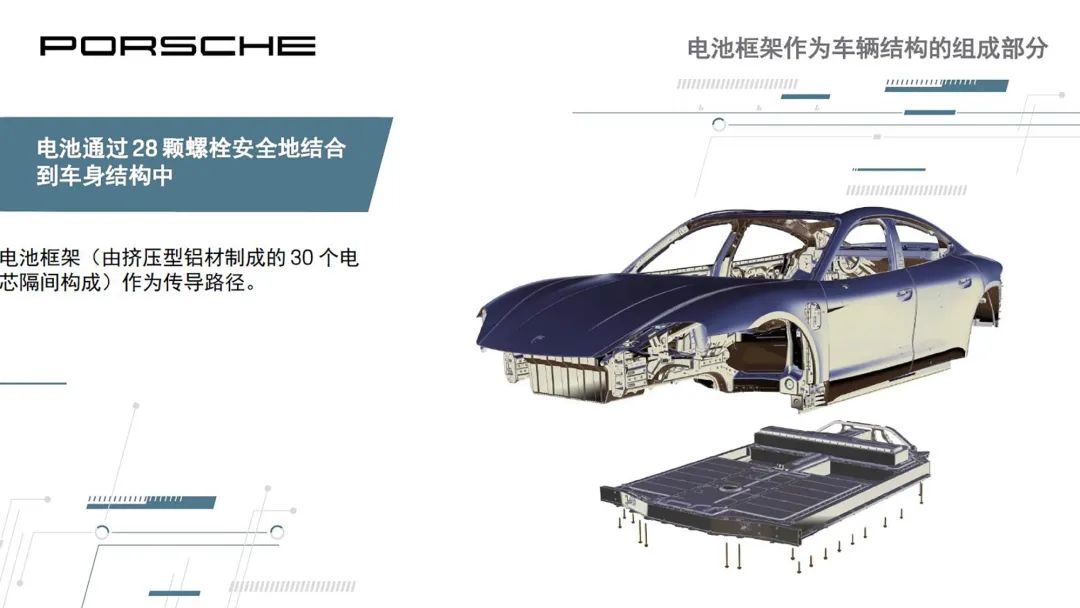
02
A vehicle with dual roles:
Maximum range or strongest performance
This time, users do not have to choose between long range and performance. The all-new Taycan features three independent circuits that can intelligently adjust the vehicle’s state according to the driver’s preferences. More intuitively, there are four driving modes: “Range” (续航里程), “Normal” (标准), “Sport” (运动), and “Sport Plus” (运动升级).
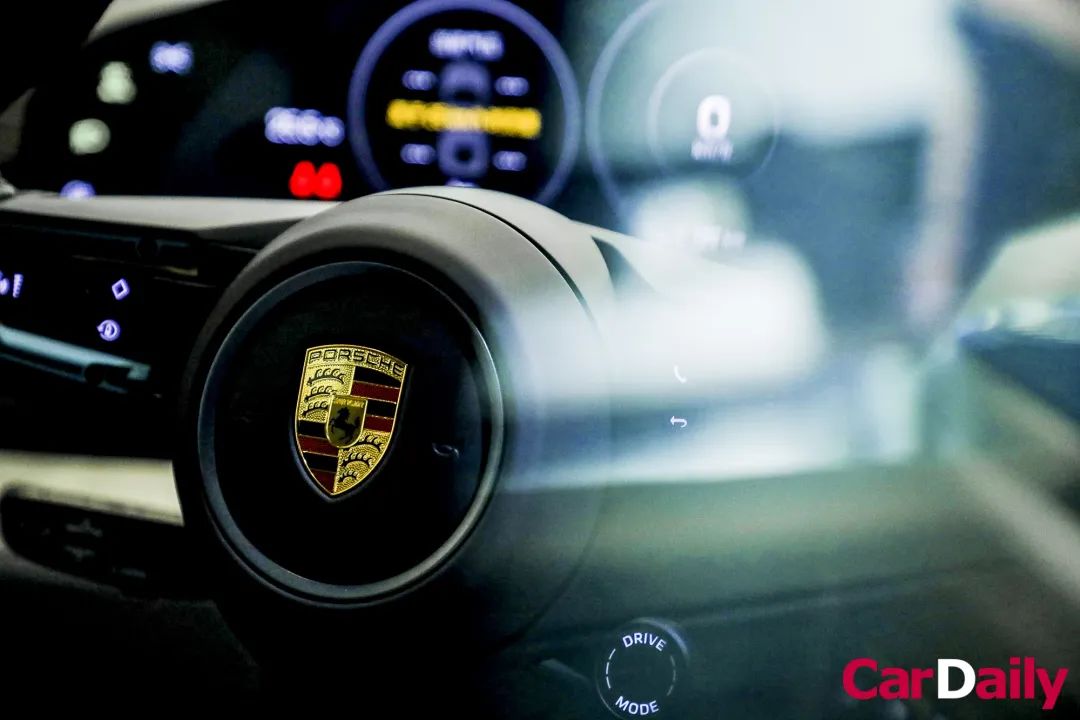
In “Range” mode, the Taycan achieves very high efficiency. The maximum speed is limited to between 90 and 140 km/h (adjustable), but the driver can break this limit at any time by pressing the accelerator pedal. While driving in this mode, the vehicle can achieve the most efficient all-wheel drive distribution. In extreme cases, the Taycan can even be driven solely by the front axle. The cooling air deflector, chassis height (lowered by 22 mm), and rear spoiler minimize air resistance. The operational efficiency of the air conditioning, hydraulic pump, air suspension, and headlights reaches its peak.
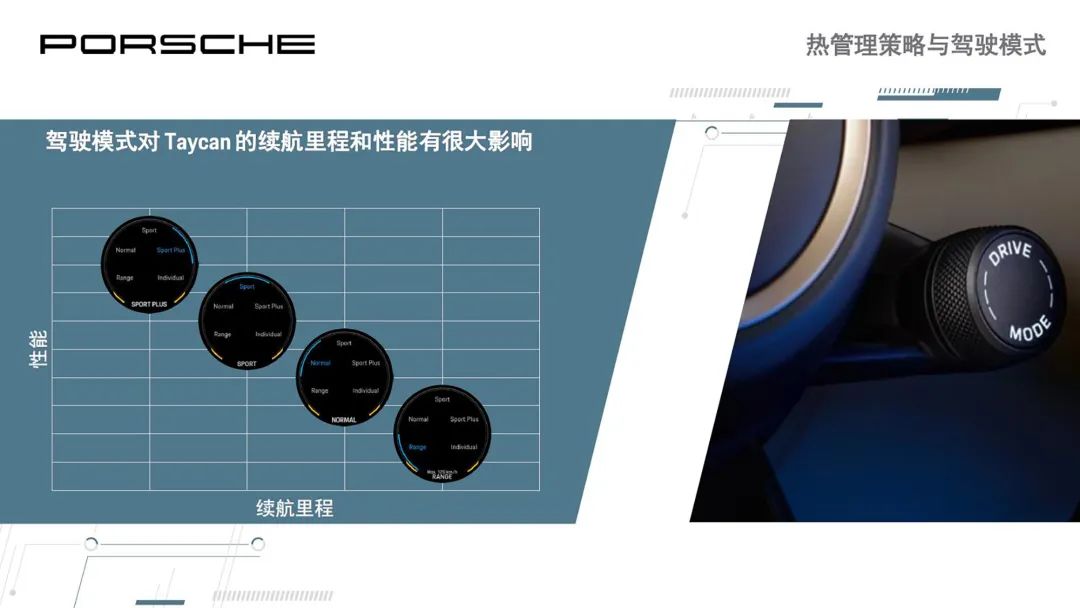
Additionally, the Taycan is the first production vehicle with a system voltage of 800 V (voltage range: 610–835 V), while common electric vehicles typically have a system voltage of only 400 V. Therefore, the Taycan offers sustained high performance and shorter charging times, with reduced cable weight and smaller installation space required.
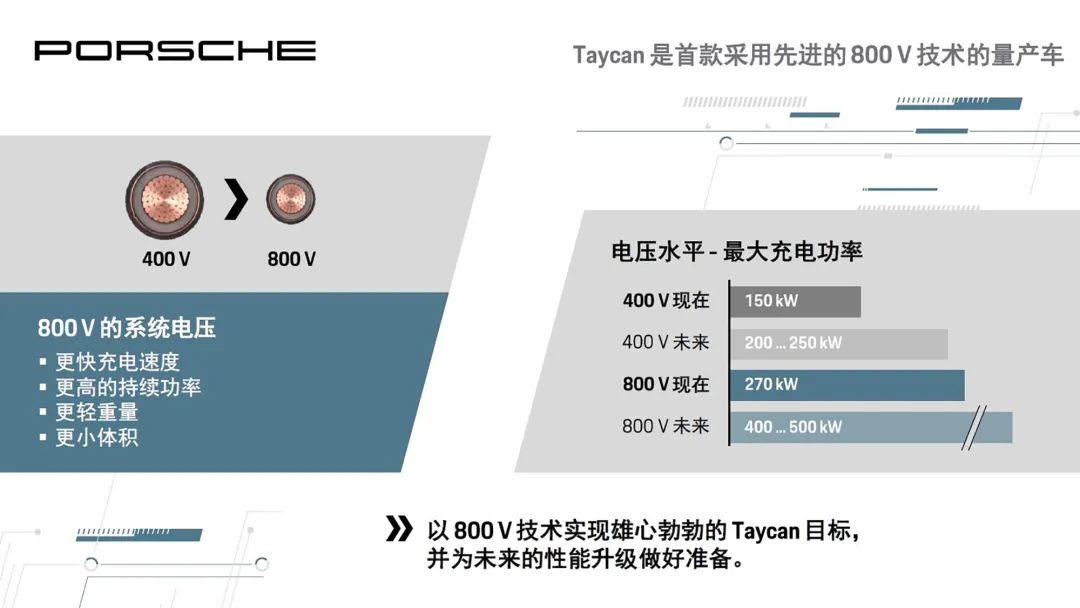
The Taycan Turbo S and Taycan Turbo come standard with a dual-layer high-performance battery upgrade that includes 33 battery modules, each consisting of 12 independent battery cells (a total of 396), with a total capacity of 93.4 kWh. The Taycan 4S and Taycan rear-wheel drive versions come standard with a single-layer standard battery with a capacity of 79.2 kWh, which is five battery modules fewer than the optional high-performance battery upgrade.
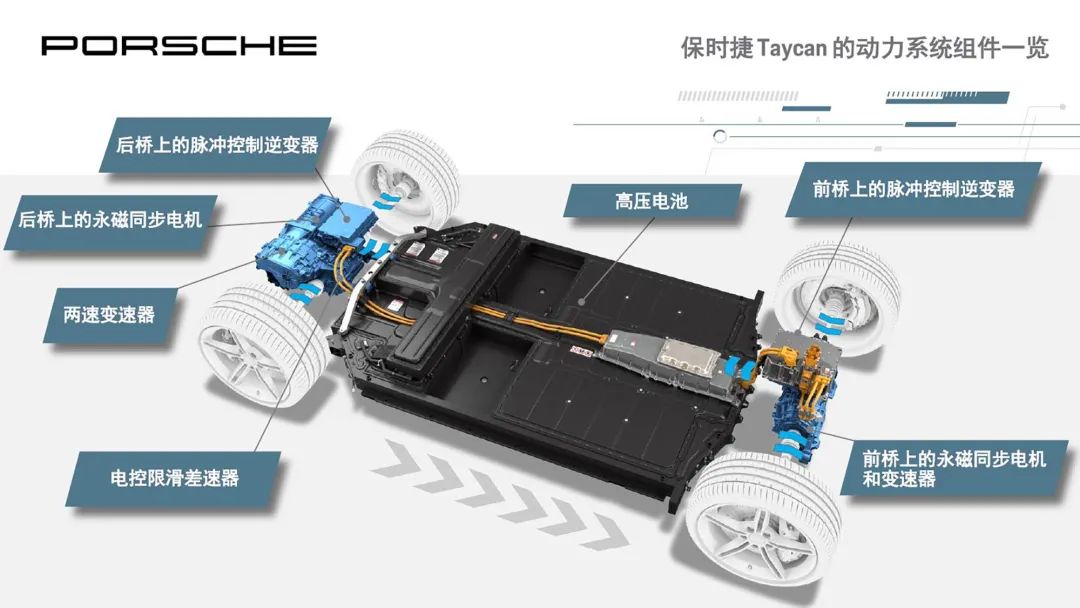
Therefore, its voltage range is approximately 520 to 720 V. The 336 battery cells within the 28 modules are interconnected based on the 168s2p technology principle. Due to the reduced number of battery modules, the weight is also lighter, allowing the Taycan 4S and Taycan rear-wheel drive versions to shed about 76 kg.
03
Unique two-speed transmission
The all-new Taycan’s rear axle two-speed transmission is an innovation from Porsche. The first gear provides the Taycan with higher starting acceleration, while the second gear offers high efficiency and high power reserves, even at high speeds.
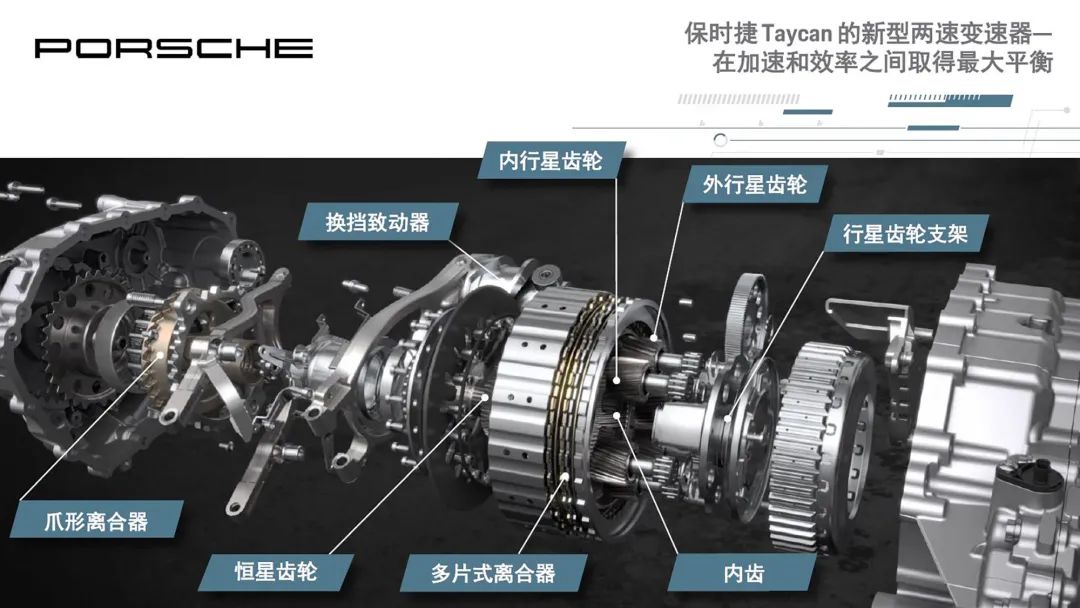
This two-speed transmission has three shafts. In addition to technically producing two straight gear stages for the second gear ratio, it also has an adjustable planetary gear set for the very small first gear ratio. For every 15 revolutions of the motor, the wheels turn once, generating an astonishing wheel torque of nearly 12,000 Nm, resulting in exhilarating starting acceleration.
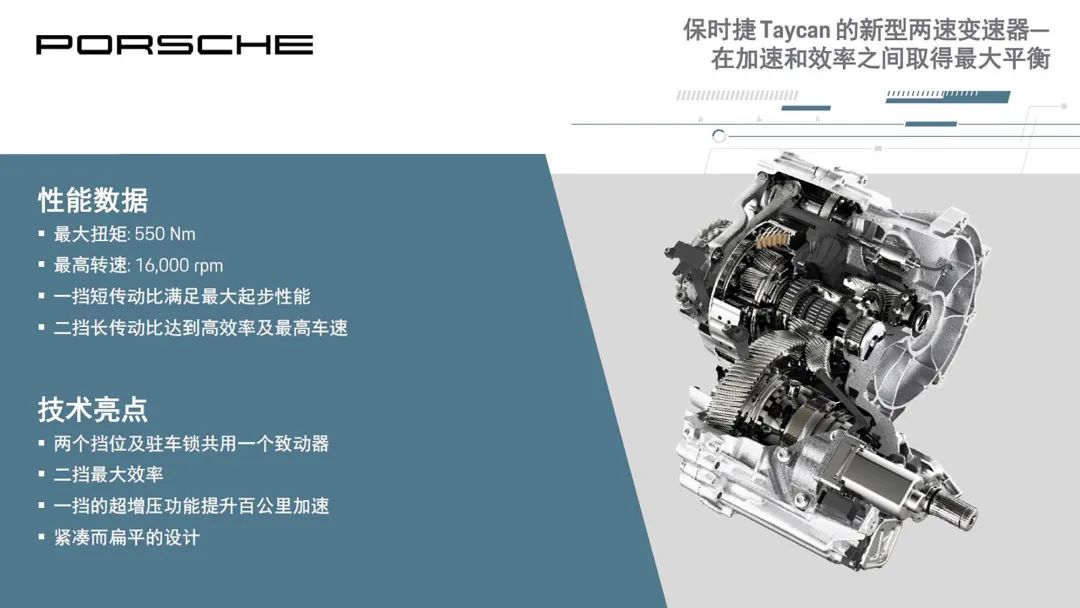
The first gear is primarily used in “Sport” or “Sport Plus” driving modes. In these two modes, the launch control system can also be utilized. The transmission remains in the first gear for an extended period before shifting to the second gear and achieving a boost. Similar to the front axle transmission, the second gear ratio is approximately 8:1. For every 8 revolutions of the motor, the wheels turn once, allowing for the vehicle’s maximum speed and acceleration reserves at high speeds.
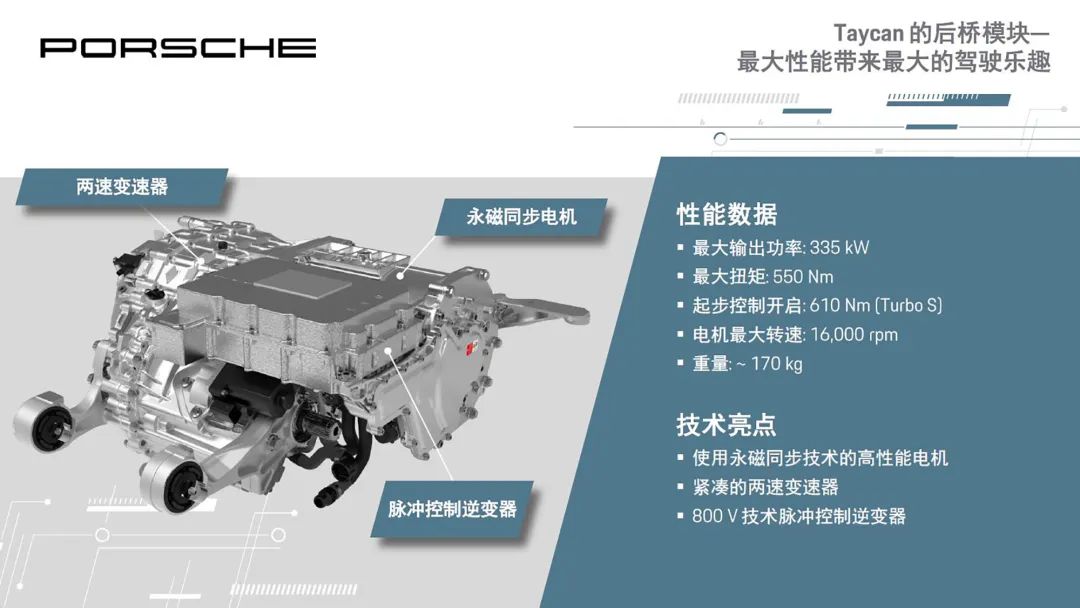
04
Hellish testing journey
Currently, the all-new Porsche Taycan has entered the final testing phase, and it can be said that it has completed every imaginable limit. This includes extreme cold performance testing near the Arctic Circle and high-temperature testing in Dubai, covering comprehensive tests in 30 countries worldwide, with temperature conditions ranging from -35 °C to 50 °C, relative humidity from 20% to 100%, and altitudes from 85 meters below sea level to over 3000 meters, completing over 100,000 charging cycles.
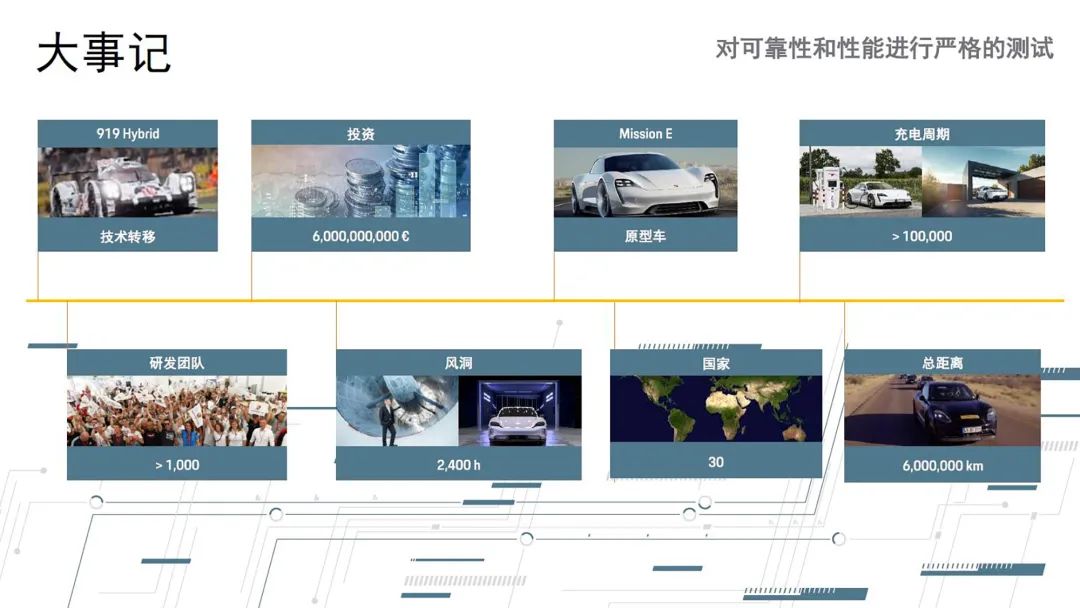
As of now, the all-new Taycan has completed approximately 6 million kilometers of testing on Earth, including 2 million kilometers of endurance driving. Moreover, on August 10, it set a new record for the fastest lap time for a pure electric production car at the Nürburgring Nordschleife with a time of 7 minutes and 33 seconds.
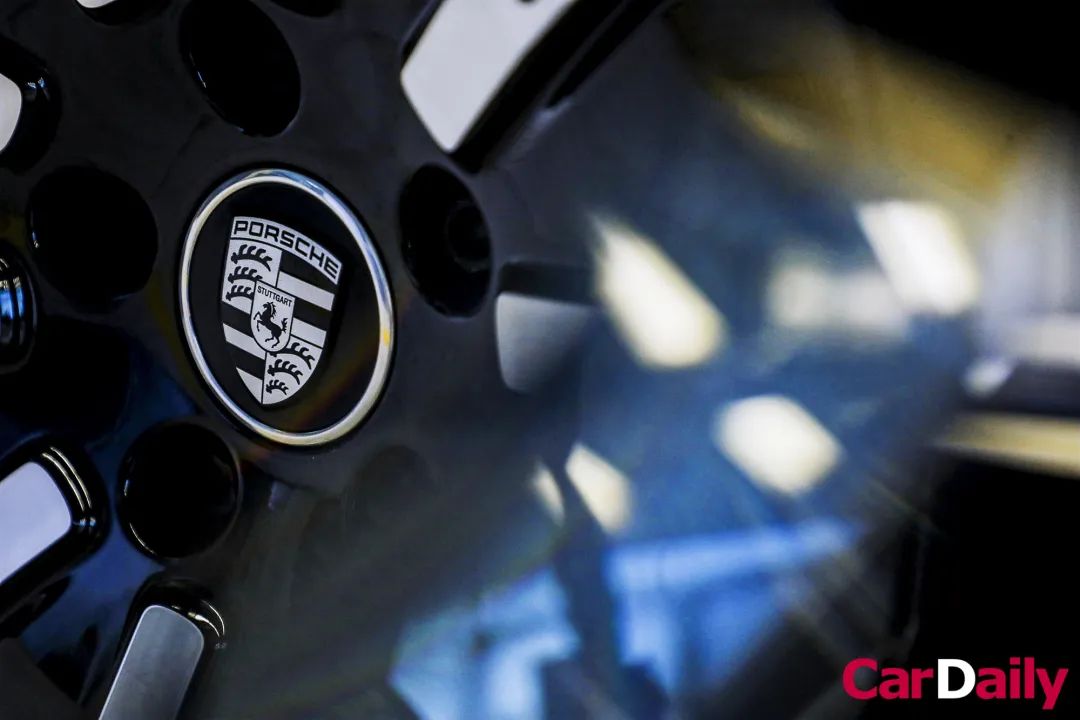
Regarding electric vehicles, we certainly have infinite expectations and imaginations, but only technology determines whether participants can fulfill their promises. Clearly, Porsche understands this principle and showcases its achievements to the world in its own way.